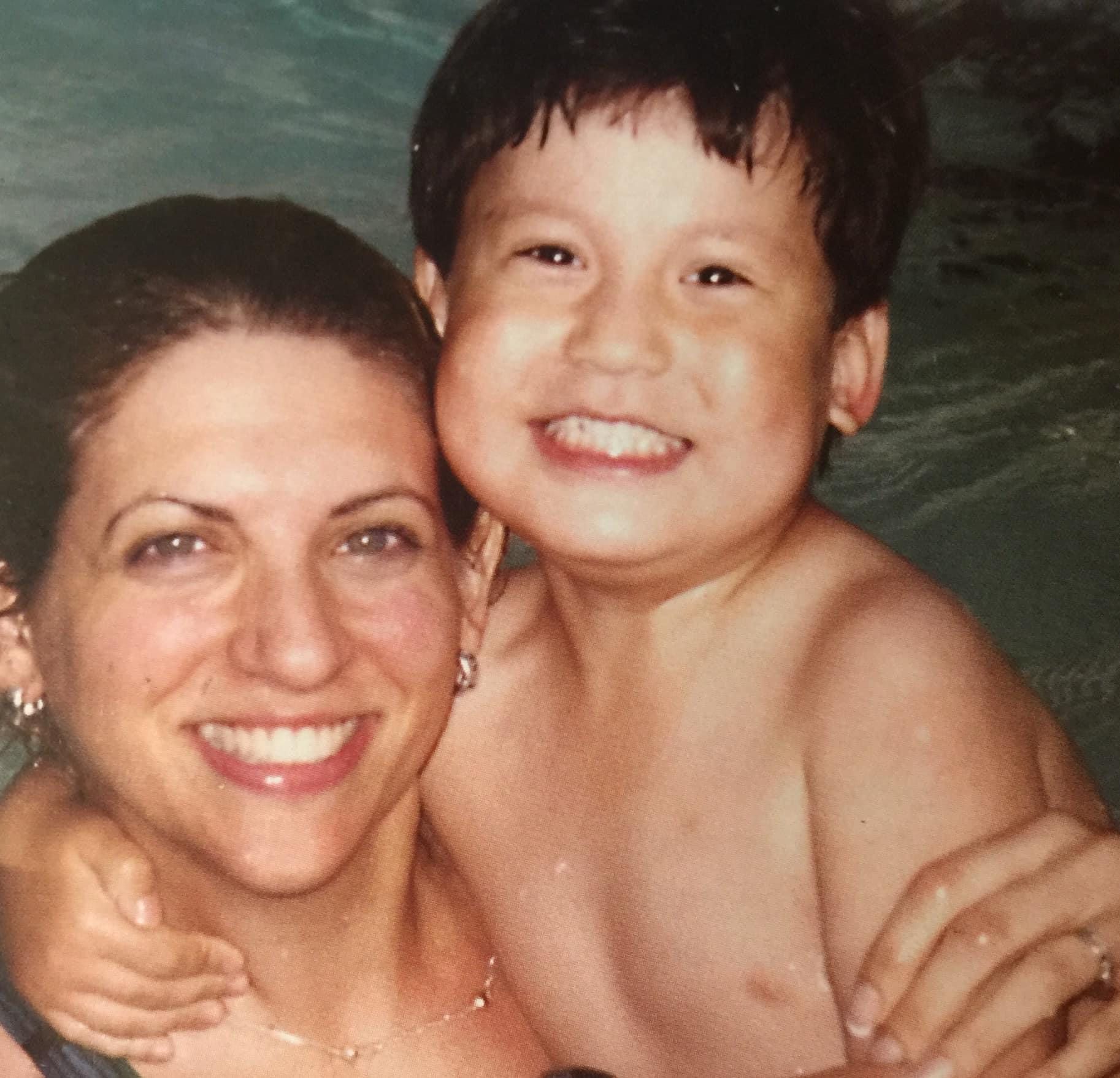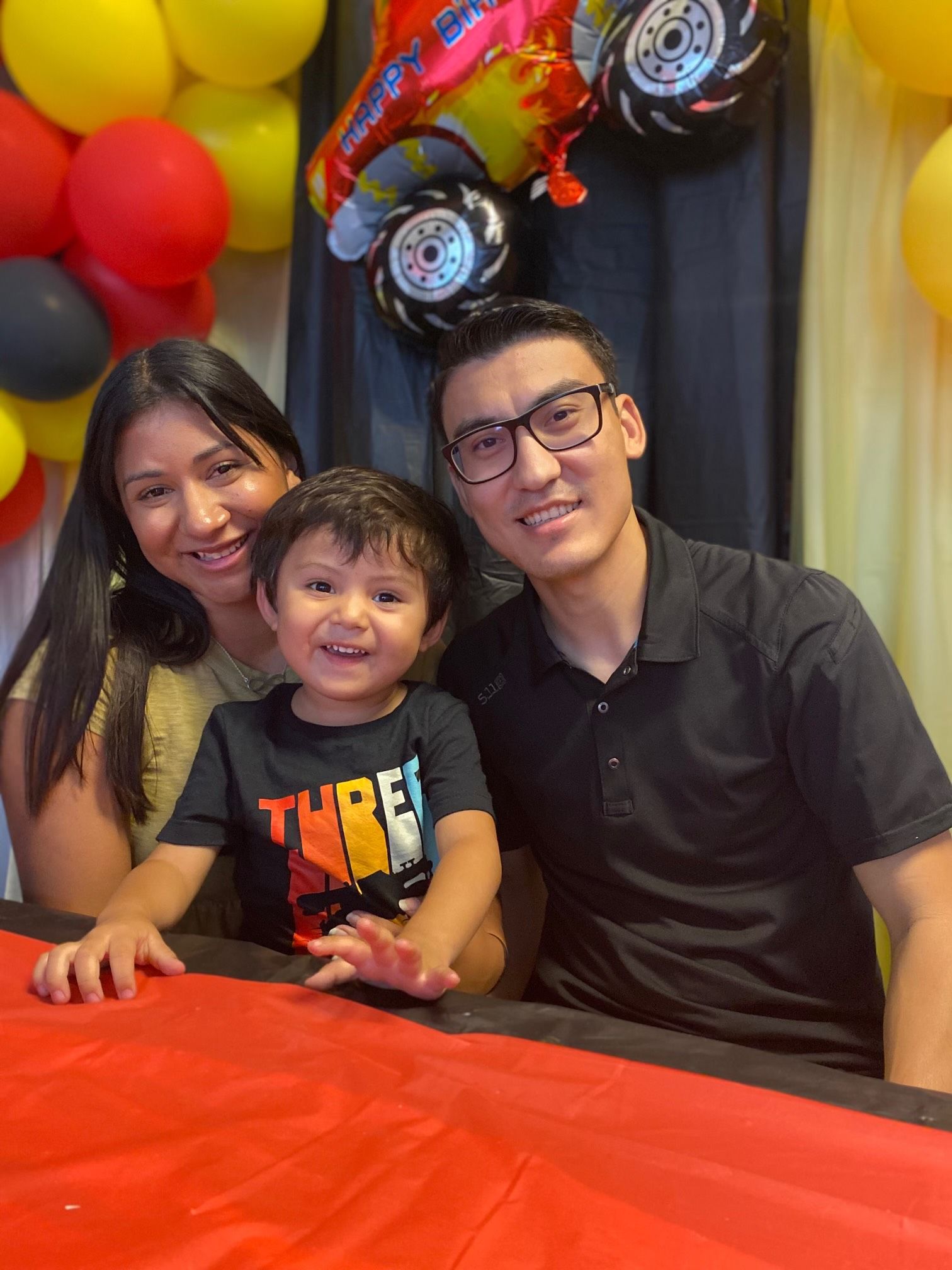As Kidsave celebrates its 25th anniversary, we are speaking with Kidsave alumni—many who have families of their own now—retired staff, friends, dedicated volunteers, and families formed through Kidsave across the years as we celebrate 25 years of love and family.
A young passenger on a crowded airplane finds unconditional love upon landing
By Sara Bunch
“My parents immediately fell in love with me at LAX,” shares Easton Sherman, a 27-year-old Kazakhstan native who unexpectedly met two educators-turned-adoptive parents, Gene and Sharyn Sherman, at Los Angeles International Airport on the day of his arrival.
In 2002, when Easton—whose given name was Baurzhan—was 5 years old and only able to communicate in Russian, Kidsave embraced a Kazakhstani orphanage as part of its five-week Summer Miracles Program. The plan was for the organization to bring ten older orphans to Los Angeles to live with a host family in hopes of finding a permanent home. Easton, however, was the 11th child of the group, and therefore left without an airplane ticket.
“I was an extra kid,” he recalls. “There was no room for me on the plane and no parents waiting for me in America, but the caregivers at the orphanage insisted that I travel along with the other kids. I was told that a host family would be found for me.”
After completing a nearly 24-hour trip, Easton needed a home for the summer. That’s when Randi Thomspon, CEO and president of Kidsave, turned to the Shermans for assistance. Kidsave volunteers Gene—who speaks Russian fluently—and his wife, Sharyn, who was handing out snacks at the airport that day, agreed to care for Easton until a host family was located.
“He was just pure joy and simply so adorable,” says Sharyn, who was so smitten with Easton that for the first time in her life, she found herself interested in becoming a mother. “We were head-over-heels in love the minute we saw him. And the more we got to know him, the more love and kindness we saw in his personality.”
By the time Easton was on a flight back to Kazakhstan, this time with a pre-arranged ticket, the Shermans were determined to make him a part of their family. A few months and many signatures later, it was official: On February 21, 2003, Easton was legally adopted by Gene and Sharyn. The couple flew to Kazakhstan to meet the orphanage staff and bring their son back home.
In Los Angeles, Easton had a difficult time adjusting to his new environment. “I struggled with trusting my new parents because I was only used to being around other kids and the orphanage staff. Walking into a new home, new culture, and new life among strangers was difficult,” he admits. “I was skeptical so I wasn’t immediately able to embrace them with open arms.”
How did the Shermans help make Easton feel comfortable and safe? They actively maintained their connections with the only adults their son trusted: Randi and the Kazakhstani orphanage staff, who traveled to see Easton in his new home and check on his well-being. “Once I saw how much my parents kept in touch with Kidsave and my previous caregivers, I knew they were legitimate, reliable, and trustworthy,” Easton says.
Another considerable issue was language. Easton spent more than a year learning how to speak English, during which time he was asked to repeat preschool. “As an adult, I have forgotten how to speak Russian,” he says with a laugh. “But my English is great.”
During that time, Easton’s parents explained to him the meaning of adoption through photos and books. “They told me that adoption is neither good nor bad, but simply another way to form a family. They also emphasized that adoption provided me with the chance to have a better life that my biological parents were unable to give me,” he says. “This perspective was critical for me, because until that point, I had always wondered why my biological parents left me. I would ask myself why they didn’t want me and what I had possibly done to deter them away.”
A few years later, while serving as a guest speaker during an event held at Pepperdine University in Malibu, a teenaged Easton explored some of the most common reasons parents consider placing their children for adoption: battles with substance abuse, addiction, and severe financial hardships. These conversations helped Easton manage some of his internal conflict and allowed him to further understand that what everyone wanted for him was a better life.
Based on her own experiences as an adoptive mother, Sharyn warns that love is not a catch-all element that can suddenly heal a hurting child. “Do not expect adopted children to instantaneously forget about their birth parents and old life as soon as they enter your home. Make an effort to meet their range of emotional needs as well as their more tangible ones,” she says. “Older children are amazing. Give them a chance to help complete your family.”
Sharyn advises that parents dive deep into some educational resources to see what adopted children need, particularly enrolling them in therapy sessions. With the expertise she has developed in this area spanning more than two decades—including adopting her now 33-year-old daughter, Arianna—Sharyn highlights the need for addressing childhood trauma. This is necessary even when everyone appears to have acclimated to a new family structure and routine. “It’s a loss no matter what age the child is,” Sharyn notes. “I wish I had considered mental health services for my children sooner than I did. I believe it would have made a substantial positive difference.”
Thriving through adulthood, Easton now has a preschool-aged son of his own—the only relative he has ever known to share his DNA. According to the results of a recent genetic breakdown test, Easton is 95% Mongolian and 5% European, which includes a Russian heritage. “I don't know if I have any biological siblings, but my son is extraordinarily special to me because he shares my distinct bloodline,” Easton explains. “He definitely looks like my twin.”
Easton is determined to eventually adopt an older child, which he views as his way of paying forward the love that he was given by the Shermans and Kidsave.
“Living with a new family who seem like strangers is the scariest feeling in the world for older kids and teenagers,” Easton reveals. “Most people only seem interested in adopting babies, but older kids also need guidance and familial love as they begin to figure out their identities and establish their places in the world.”
For children who are waiting to find their forever families, Easton encourages them to remain hopeful and unafraid. But most importantly, he urges them to present themselves as they are—with authenticity and confidence. “When a kid and a family seem to have a connection, then it’s meant to be,” he notes. “And it’s important for the kids to have faith in the process, be grateful for their new family, and believe that they are worthy and lovable.”
When it comes to the idea of adopting a child, Easton’s message is simple: “Don’t second guess yourself if this is truly your heart’s desire. Adopting from your heart will help children feel like a part of the family, even if they are from a different country. Adoption is about making children feel loved, wanted, and special, so the best approach to giving them a fresh start is to lead with your heart.”
Kidsave's 25th Anniversary
Join us as we celebrate our 25th anniversary at the Kidsave Miracles Gala! Tickets and sponsorship opportunities are available now. Are you a Kidsave family who wants to share your story? Learn how here.












